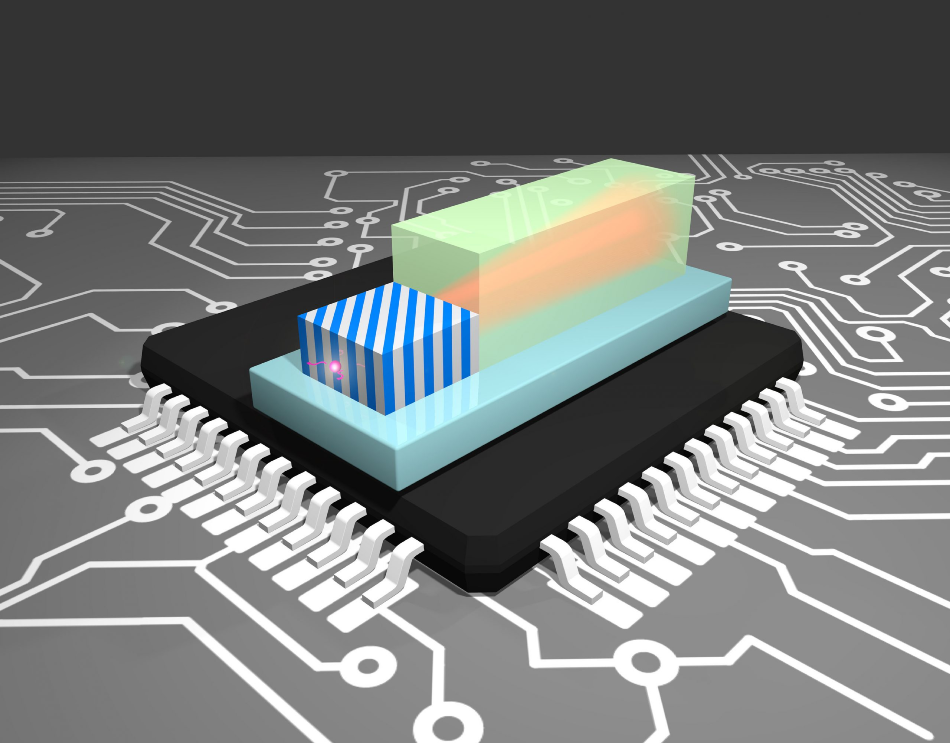May 6 2020
A new kind of technology that is based on photons—the fundamental particle of light—is used in the field of quantum photonics. The photons can possibly carry quantum bits of information across huge distances.
 Quantum Networks with High Repetition Rates" />
Broadband enhancement of the on-chip single-photon extraction via tilted hyperbolic metamaterials. A quantum emitter is positioned very close to a hyperbolic metamaterial, whose optical axis is tilted with respect to the end facet of nanofiber. Image Credit: Lian Shen.
Quantum Networks with High Repetition Rates" />
Broadband enhancement of the on-chip single-photon extraction via tilted hyperbolic metamaterials. A quantum emitter is positioned very close to a hyperbolic metamaterial, whose optical axis is tilted with respect to the end facet of nanofiber. Image Credit: Lian Shen.
The ability to place the photon source on a single chip and making it to generate photons at a high rate could allow high-speed quantum communication or information processing, which would be a significant breakthrough in the area of information technologies.
Researchers have described a simple on-chip photon source based on a so-called hyperbolic metamaterial in this week’s issue of Applied Physics Reviews, from AIP Publishing.
They performed calculations to demonstrate that a prototype made using the hyperbolic metamaterial arranged in a specific way can solve issues of low efficiency and enable high repetition rates for on-chip photon sources.
To date, researchers were often using single-photon sources made from self-assembled quantum dots in semiconductors or from materials that have structural defects, such as diamonds.
However, generating single photons at high rates from such materials is challenging. Although researchers have tried certain methods to overcome this problem, so far, the results are affected by low efficiency and a narrow bandwidth.
These problems can be solved by another approach: the use of exclusive materials, like metamaterials, as the photon source. Metamaterials are made by stacking dielectric and metallic layers, structured at a level quite smaller compared to the wavelength of light in use.
Upon being formed into shapes, such as nanowires, they tend to show strange optical properties. Electrons that flow through the material establish a collective oscillation called a surface plasmon, thus producing localized electromagnetic fields.
Hyperbolic metamaterials are highly anisotropic variants of these metamaterials. They have the ability to control light in several ways. For instance, they can reduce the wavelength of light and enable it to move freely in one direction while inhibiting its movement in another direction.
The researchers put forward a geometry for their on-chip photon source, which involves tilting a hyperbolic metamaterial at a specific angle with respect to the end facet of the adjacent nanofiber used to transmit the emitted photons. The tilt angle is chosen very carefully to suppress the light reflections at the interface with the fiber.
The researchers performed calculations that showed the simple geometrical arrangement should be able to solve the previous drawbacks of these materials.
Our work represents a vital step toward the implementation of spectrally broad single photon sources with high repetition rates for on-chip quantum networks.
Lian Shen, Study Co-Author
Journal Reference:
Shen, L., et al. (2020) Broadband enhancement of on-chip single-photon extraction via tilted hyperbolic metamaterials. Applied Physics Reviews. doi.org/10.1063/1.5141275.